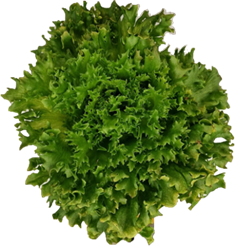Including algae in peat growth medium helps protect lettuce plants against stress and injury
- ce2coast

- Oct 16, 2023
- 2 min read
The effectiveness of freeze-dried algal biomass as a nutrient source was tested on Crispi lettuce plants with some interesting results. The algal biomass was crushed into fine powder, having already been tested for nutrient content. The nutrient analyses of the algae indicated a relatively good N:P:K (nitrogen:phosphorous:potassium) ratio, meaning we could potentially use the algae as a stand-alone fertiliser product without having to add any other nutrients. We filled 3L pots with fertilised peat and included enough algal biomass to give 0.3 g total nitrogen to each plant – the recommended amount for lettuce growth. The pots were then placed in a controlled environment growth chamber and the lettuce plants were grown to maturity before we analysed several different parameters. The experiment was set up so as to compare the effects of mineral fertiliser, a combination of mineral fertiliser and algae, algae alone, and no fertiliser (see Table 1). The final treatment was included as we were using fertilised peat and wanted to exclude background effects from the nutrients available in the peat.
Table 1. Treatments for the Crispi lettuce plants grown in controlled environment growth chambers. The factorial design included treatments both with (A) and without (P) algae included in the growth medium, with both of those treatments watered with either mineral fertiliser (M) or distilled water (V).
| Watering regime | | |
|---|---|---|---|
Mineral fertiliser | Water | ||
Growth medium | Peat | PM | PV |
| Peat + Algae | AM | AV |
Photos: Full grown Crispi lettuce plant, side and top view. Source: Sheona Innes, NMBU.
Lettuce plants grown in the different treatments did not show any differences in their growth rates or morphology. There was also very little difference in their nutrient uptake, though the plants grown with no algae or mineral fertiliser were starting to show signs of nutrient deficiency at the end – indicating the nutrients from the fertilised peat had been used up. However, greenhouse-grown lettuce is quite prone to leaf-tip-burn: the development of necrotic tissue on the outer edges of lettuce leaves. This is believed to be related to calcium deficiency but may also be induced by oxidative stress. The presence of leaf tip burn was affected by the algae – the plants grown with algae in the peat showed less leaf tip burn, regardless of what they were being watered with.
To better understand this, we checked the nutrient and antioxidant profiles of the plants. The calcium profiles showed no differences between the treatments, but the plants grown with algae had lower antioxidant power – indicating that these plants are experiencing less oxidative stress and thereby less tip-burn. Photosynthetic measurements of chlorophyll-a fluorescence also indicated that the operating efficiency of photosynthesis was higher in plants grown with algae – indicating that these plants are less stressed.
Photos: Inner-leaf tip-burn in a plant grown without algae (left), and no signs of inner-leaf tip-burn in a plant grown with algae included in the peat (right). Source: Sheona Innes, NMBU.
We are now looking into the possible reasons why including algae in the growth medium may have reduced the stress levels of the plants and made them less susceptible to leaf tip-burn. Ongoing experiments are also analysing:
the mineralisation rate of algae in different growth media, and how this will affect the growth of different species, and
the effect of algal inclusion in various growth media on tomatoes – including a hydroponic system, with some very interesting preliminary results: watch this space!








Comments